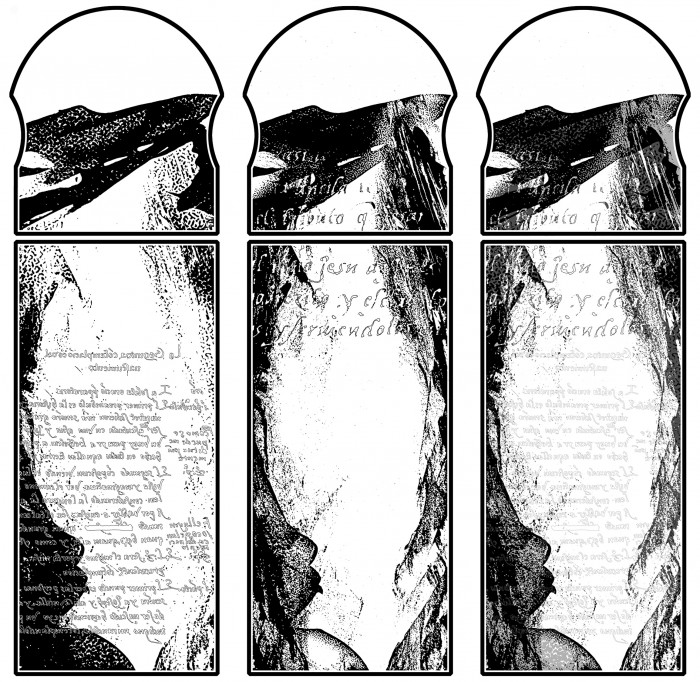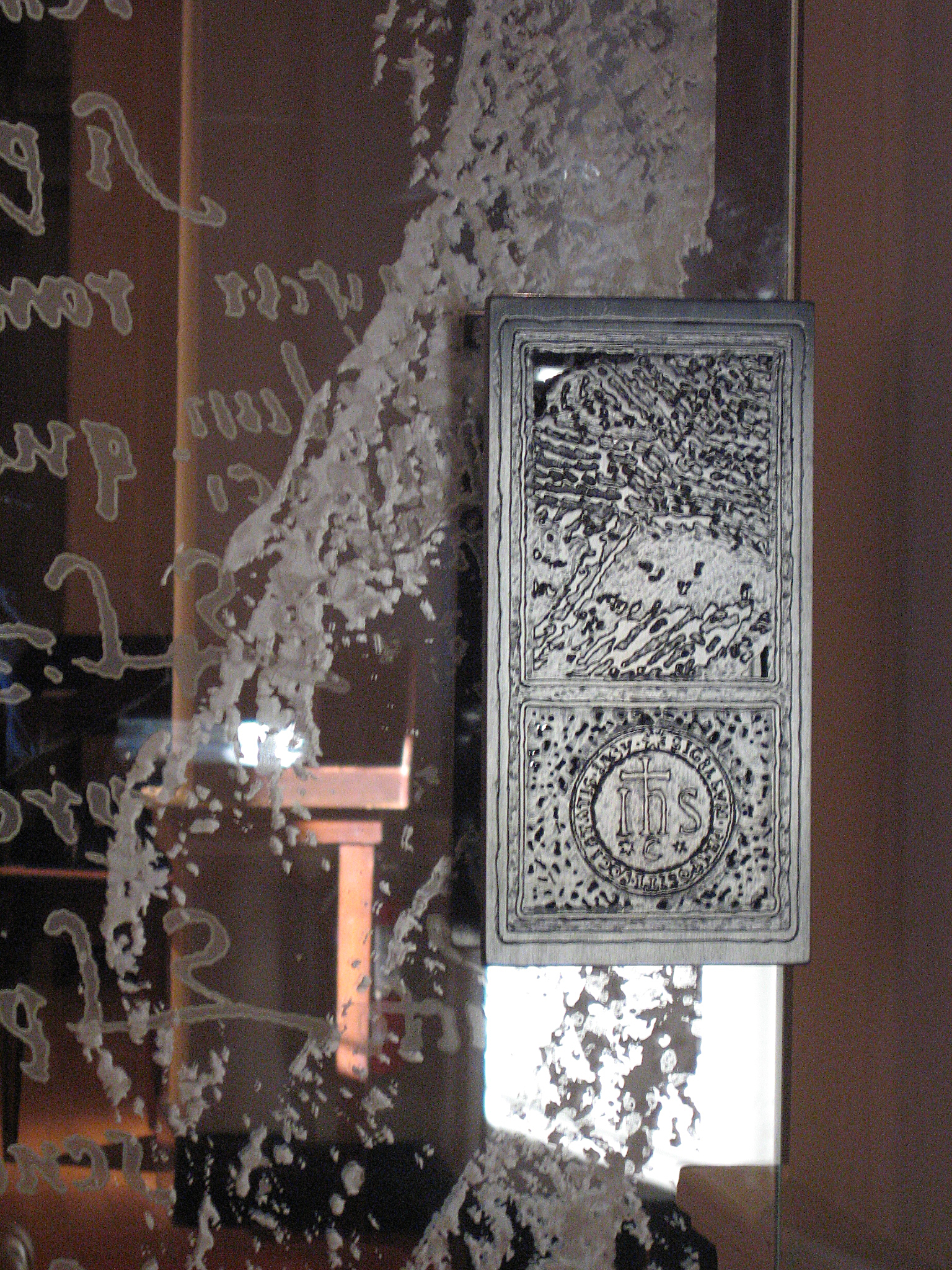Cómo Contemplar: Inspiration and Back Story
The side door that veils visual entry into Manresa Gallery draws its inspiration from a pivotal time in the life of St. Ignatius of Loyola (1491-1556), patron saint of San Francisco’s landmark St. Ignatius Church. In Manresa, Spain Ignatius spent much time praying in a cave and assessing his knowledge of the good and bad spirits. There, he received mystical illuminations that influenced the formulation of The Spiritual Exercises: directives and meditations based on his own experiences as a lay person. They are the cornerstone of Ignatian Spirituality.
Conceived and commissioned in late 2007 by the Gallery’s Director, Fr. James R. Blaettler, S.J., and executed in 2008 by artist Christian Karl Janssen, the door serves as a homage to Ignatius’ leadership and attests to his profound prayer life in Manresa. Assigning a theme to the threshold, the doorway’s etched text invites viewers to transition from the bustling outside world into the stillness of a contemplative Gallery space, whose four joined alcoves reference the Manresa caves. The door’s transparent, floating text invites one to reflect spiritually, more immediately on a foundational Biblical story that is brought powerfully to light through the visual. A strong sense of touch encourages one to enter.

Etched on the door is a digital copy of St. Ignatius’ own Spanish handwriting that instructs one how to pray. Entitled The Second Contemplation on the Birth of Christ, the text includes his corrective glosses, which direct readers, for example, to meditate specifically on the cave at Bethlehem. The door’s border digitally converts actual rock formations along the Cardoner River adjoining the Manresa caves. The womb-like shape of the textured door serves as a reminder of the power of the visual mind to harbor and transform our ordinary story and experience of place into sacred space – a technique that came to be called “composition of place.” As one moves through the doorway, one’s hope of viewing visual treasures and receiving illumination within the Gallery is heightened. Otherwise mirrored, the main body of the text is easily read only from within the illuminated, nourishing space of the Gallery. Ignatius’ devotion to the crib of Christ, before whose relics he celebrated his first Mass, signaled his total availability to what Christ would see. The story includes Ignatius’ addition of a companion servant girl who travels with Mary and Joseph and it alerts the one entering the meditation of a call to new service: a shift from paying tribute to Caesar to giving service to the Christ child. Thus, the powerful portal of the human imagination has its justification in the Incarnation of the Divine.
The double handles of the door present a stunning work of art that proclaims devotion and service. The two images facing the Church include a cup – the type Ignatius used to beg for food or alms – and below it, his signature, taken from a document attesting his election as first General or head superior of the Jesuits. The handle’s interior component includes an image of one of St. Ignatius’ pilgrim sandals, purchased for his trip to Manresa, above an image of his own seal as General.
The etched door emphasizes that Manresa Gallery hopes to inspire visitors to use their own visual imaginations to process outer and inner worlds. Following Ignatius, the Gallery shows that a renewed vision happens through focusing the senses on both the familiar and the foreign, the old and the new. Modern viewers are encouraged to look with fresh, open eyes as they engage with the art that awaits them beyond the partially veiling Manresa door.
The Artist on Technique
“Cómo contemplar is a layered glass etching for the Manresa Gallery entry door and transom. The work was approached as planar sculpture, and as such integrates time, text written by St. Ignatius, my brushwork, digital mastering, computer assisted manufacturing, industrial materials, and glass studio techniques. The intent was to realize a subtle work of beckoning whose voice speaks gently to open eyes. After research and meditation, I painted with gouache on vellum. The final layers of brushwork and text were composed digitally in collaboration with Fr. Blaettler and Lutz Haufschild. I operated computer software as we viewed a digital projection, and for 5 hours we talked and evolved the artwork. After the composition was complete, then the artwork was digitally mastered as multilayered etching for both glass sides. The primary masks were cut by a computer controlled carbide bit, availing extensive detail and fine precision. I flew the stencils to Vancouver and worked with master artisans to texture and etch. Specific etchings articulate different components of the overall composition. Each glass side includes two stages of articulated mask and also hand applied resists, which were progressively etched away with 100 grit aluminum oxide. Masking methods include computer cut stencil, specialty in-house techniques, and I painted resist directly on the glass with a custom 5 foot long brush. The glass was cleaned, shipped by truck from Canada, and professional installed at St. Ignatius Church.” – Christian Karl Janssen

